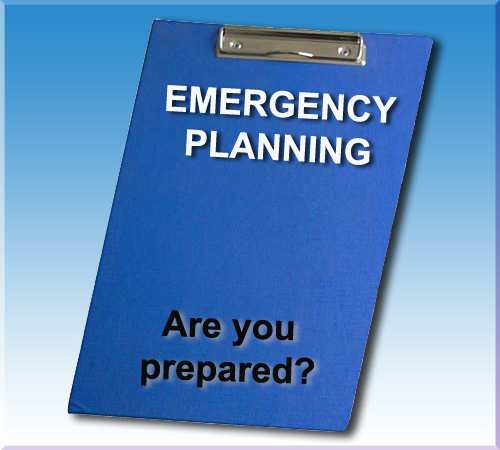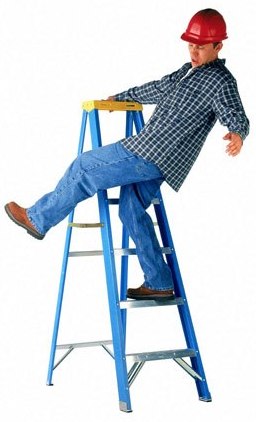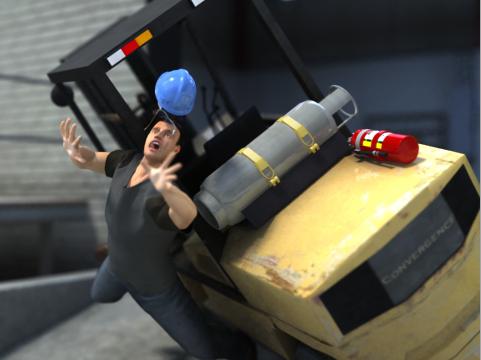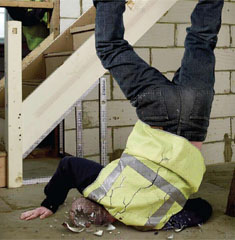 Emergency planning is an important part of a comprehensive workplace safety program. Taking proactive steps can reduce the social and economic costs of emergencies, criminal acts, crises, and disasters. An effective response during an emergency depends on the quality of planning and training that occurs before a situation arises.
Emergency planning is an important part of a comprehensive workplace safety program. Taking proactive steps can reduce the social and economic costs of emergencies, criminal acts, crises, and disasters. An effective response during an emergency depends on the quality of planning and training that occurs before a situation arises.
Tag: safety
Dangers of Staph Infections
 Staph infections are caused by staphylococcus bacteria, a type of germ commonly found on the skin or in the nose of even healthy individuals. Most of the time, these bacteria cause no problems or result in relatively minor skin infections.
Staph infections are caused by staphylococcus bacteria, a type of germ commonly found on the skin or in the nose of even healthy individuals. Most of the time, these bacteria cause no problems or result in relatively minor skin infections.
But staph infections can turn deadly if the bacteria invade deeper into your body, entering your bloodstream, joints, bones, lungs or heart.
In the past, a lethal staph infection might have occurred in a person who was hospitalized or had a chronic illness or weakened immune system. Now, a growing number of otherwise healthy people are developing life-threatening staph infections. And many staph infections no longer respond to common antibiotics.
Portable Ladder Safety
 Portable ladders are one of the handiest, simplest tools we use. Because of their effectiveness, ladders are used by many different people to perform many different tasks. Although ladders are very uncomplicated, planning and care are still required to use them safely. Each year in the U.S., accidents involving ladders cause an estimated 300 deaths and 130,000 injuries requiring emergency medical attention.
Portable ladders are one of the handiest, simplest tools we use. Because of their effectiveness, ladders are used by many different people to perform many different tasks. Although ladders are very uncomplicated, planning and care are still required to use them safely. Each year in the U.S., accidents involving ladders cause an estimated 300 deaths and 130,000 injuries requiring emergency medical attention.
via G1932 Portable Ladder Safety | University of Missouri Extension.
OSHA – Top 10 Most Frequently Cited Standards
![]() The following is a list of the top 10 most frequently cited standards following inspections of worksites by federal OSHA. OSHA publishes this list to alert employers about these commonly cited standards so they can take steps to find and fix recognized hazards addressed in these and other standards before OSHA shows up. Far too many preventable injuries and illnesses occur in the workplace.
The following is a list of the top 10 most frequently cited standards following inspections of worksites by federal OSHA. OSHA publishes this list to alert employers about these commonly cited standards so they can take steps to find and fix recognized hazards addressed in these and other standards before OSHA shows up. Far too many preventable injuries and illnesses occur in the workplace.
- 1926.451 – Scaffolding
- 1926.501 – Fall Protection
- 1910.1200 – Hazard Communication
- 1910.134 – Respiratory Protection
- 1910.147 – Lockout/Tagout
- 1910.305 – Electrical, Wiring Methods
- 1910.178 – Powered Industrial Trucks
- 1926.1053 – Ladders
- 1910.303 – Electrical, General Requirements
- 1910.212 – Machine Guarding
Forklift Safety
 Each year, tens of thousands of injuries related to powered industrial trucks (PIT), or forklifts, occur in US workplaces. Many employees are injured when lift trucks are inadvertently driven off loading docks, lifts fall between docks and an unsecured trailer, they are struck by a lift truck, or when they fall while on elevated pallets and tines. Most incidents also involve property damage, including damage to overhead sprinklers, racking, pipes, walls, and machinery. Unfortunately, most employee injuries and property damage can be attributed to lack of safe operating procedures, lack of safety-rule enforcement, and insufficient or inadequate training.
Each year, tens of thousands of injuries related to powered industrial trucks (PIT), or forklifts, occur in US workplaces. Many employees are injured when lift trucks are inadvertently driven off loading docks, lifts fall between docks and an unsecured trailer, they are struck by a lift truck, or when they fall while on elevated pallets and tines. Most incidents also involve property damage, including damage to overhead sprinklers, racking, pipes, walls, and machinery. Unfortunately, most employee injuries and property damage can be attributed to lack of safe operating procedures, lack of safety-rule enforcement, and insufficient or inadequate training.
Prevent Fall Injuries in the Workplace
 Falls are a persistent hazard found in all occupational settings. A fall can occur during the simple acts of walking or climbing a ladder to change a light fixture or as a result of a complex series of events affecting an ironworker 80 feet above the ground. According to the 2009 data from the Bureau of Labor Statistics, 605 workers were killed and an estimated 212,760 workers were seriously injured by falls to the same or lower level.
Falls are a persistent hazard found in all occupational settings. A fall can occur during the simple acts of walking or climbing a ladder to change a light fixture or as a result of a complex series of events affecting an ironworker 80 feet above the ground. According to the 2009 data from the Bureau of Labor Statistics, 605 workers were killed and an estimated 212,760 workers were seriously injured by falls to the same or lower level.
via CDC – Fall Injuries Prevention in the Workplace – NIOSH Workplace Safety and Health Topic.
